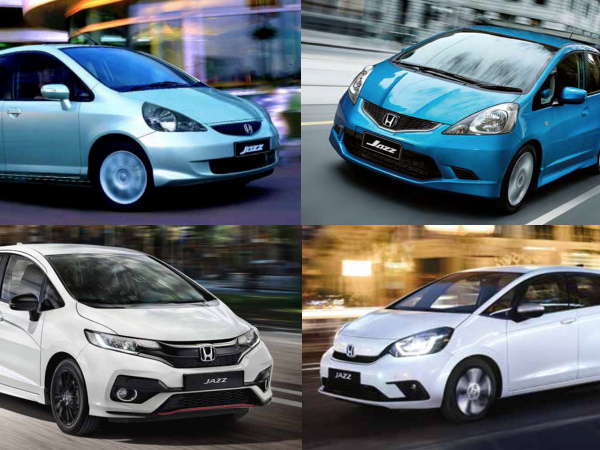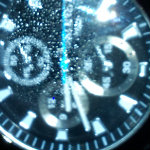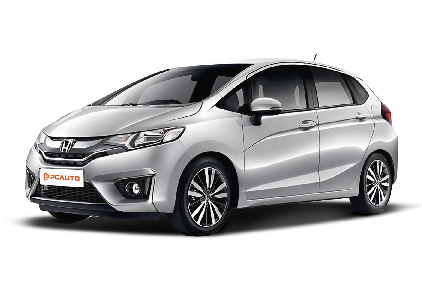Q
honda jazz how to connect bluetooth
Here's how to pair your phone with Bluetooth in a Honda Jazz: First, make sure the car's ignition is on or the engine is running. Then fire up the infotainment system on the center console and navigate to the "Settings" or "Bluetooth" menu. Look for an option like "Add New Device" – selecting that will make the car start scanning for nearby Bluetooth signals.
Next, grab your phone, head into its Bluetooth settings, and turn Bluetooth on. Let it scan for available devices, and you should see "Honda Jazz" (or something similar) pop up in the list. Tap that to initiate pairing. A PIN code might show up on both the car's screen and your phone – just make sure they match, then confirm to finish the connection. Once it's all set up, you can stream music through the car's speakers or take hands-free calls.
Quick heads-up: The exact steps can vary a bit depending on your Jazz's model year. Older models might require using physical buttons to get into the Bluetooth menu, while newer ones probably have touchscreen controls. If you run into connection issues, try toggling Bluetooth off and on again on your phone or restarting the car's infotainment system. Also, check if other devices might be causing interference.
Bluetooth is pretty much standard in modern cars these days. Beyond just music and calls, a lot of models now offer Bluetooth screen mirroring or voice control features – little extras that can really enhance your driving experience. For the best results, it's a good idea to keep both your car's system and phone software updated to ensure everything plays nice together.
Special Disclaimer: This content is published by users and does not represent the views or position of PCauto.
Related Q&A
Q
What Segment is Honda Jazz?
The Honda Jazz is classified as a B-Segment small hatchback in the Malaysian market. This segment is typically characterized by flexible handling, economic practicality, and convenience for urban commuting, making it suitable for Malaysia's narrow streets and high fuel costs. The Jazz has become a popular choice in this segment, especially among young families and urban commuters, thanks to its iconic "Magic Seat" flexible seating design, efficient Earth Dreams engine technology, and spacious interior within a compact body.
In the Malaysian market, competing models in the same segment include the Toyota Yaris and Perodua Myvi. However, the Jazz is well - known for the high resale value and reliability of the Honda brand. It's worth noting that B - Segment vehicles in the Southeast Asian market generally prioritize fuel economy and maintenance costs. The combination of the Jazz's 1.5L i - VTEC engine and CVT transmission can achieve an actual fuel consumption of over 15 km/L, meeting the local consumers' demand for practicality.
In addition, this vehicle line was upgraded to a hybrid version in some global markets in 2021. However, the current models in Malaysia still mainly use traditional fuel power. Whether a new energy version will be introduced in the future depends on Honda's regional strategic adjustments.
Q
What is the Reslae Value of Honda Jazz?
The resale value of the Honda Jazz in the Malaysian used - car market is relatively stable. This is due to its reliable quality, low fuel consumption, and the high local recognition of the Honda brand. Depending on the vehicle's age, mileage, and condition, a 3 - to 5 - year - old Jazz can usually retain 50% - 65% of its original price. The Hybrid models may have a 5% - 8% premium because of their energy - saving features.
The key factors affecting its residual value include regular maintenance records (especially the maintenance of the CVT transmission), the body color (white and silver are more popular), and whether it is still within the original factory warranty period. It is recommended that car owners keep complete maintenance receipts and use original factory parts to maximize the vehicle's value retention.
Among its peers, the used - car price performance of the Jazz is better than some of its competitors. This is related to its flexible space design (such as the ULTRA seat system) and low failure rate. However, the specific transaction price still needs to refer to the real - time data on used - car platforms like Carlist or mytukar.
It's worth noting that the tax - exemption policy for domestic cars introduced in some regions after 2020 has slightly affected the price fluctuations of imported used cars. But as a cost - effective urban vehicle, the demand for the Jazz remains strong in urban areas like the Klang Valley.
Q
How Many CC is Honda Jazz?
The Honda Jazz models available in the Malaysian market are mainly equipped with a 1.5 - liter naturally aspirated engine with a displacement of 1497cc (cubic centimeters). This is a common 'golden displacement' for compact hatchbacks, balancing fuel economy and power performance. This engine uses Honda's i - VTEC technology, capable of outputting approximately 120 horsepower and 145 Nm of torque. It is paired with a CVT transmission or a 6 - speed manual transmission (depending on the version), which is suitable for urban commuting and flexible driving.
It's worth noting that while the displacement (CC) affects power output, the actual driving experience also depends on engine tuning, vehicle weight, and the matching of the transmission system. For example, Honda has optimized the combustion efficiency of the Jazz through Earth Dreams technology, making the torque more abundant at low speeds. Malaysian customers can also pay attention to the minor changes in different model years when making a choice. For instance, some versions after 2020 have upgraded the Honda SENSING safety system.
Similar models in the same class, such as the Toyota Yaris or Perodua Myvi, also use a similar displacement, but they have different technological focuses. It is recommended to take test drives for comparison. Additionally, Malaysia's automotive tax structure gives vehicles with a displacement below 1.5 liters a price advantage, which is also one of the reasons why the Jazz has been popular for a long time.
Q
What is the Engine in Honda Jazz?
The Honda Jazz available in the Malaysian market is equipped with a 1.5-liter i-VTEC naturally aspirated gasoline engine. This engine is well - known for its high efficiency and reliability. It has a maximum output power of approximately 120 horsepower and a peak torque of 145 Nm, making it suitable for city driving and daily commuting while also taking fuel economy into account.
This engine adopts Honda's classic i-VTEC technology, which optimizes power output and fuel consumption through an intelligent variable valve timing and lift system. Paired with a CVT continuously variable transmission, it offers a smooth driving experience.
In addition, the Honda Jazz also comes in a hybrid version (such as the e:HEV). It combines a 1.5-liter Atkinson cycle engine with a dual - motor system, further enhancing energy - saving efficiency, which is ideal for consumers with higher environmental protection requirements.
For Malaysian users, the durability and low maintenance cost of this engine are also among the reasons for its popularity. Moreover, Honda's after - sales service network covers the whole country, providing convenience for car owners. When it comes to the used - car market, the engine of the Jazz also has a relatively high resale value, making it an economical and practical choice.
Q
What is the Gearbox Type of Honda Jazz?
The transmission types vary among different versions of the Honda Jazz. Specifically, the 2019 Honda Jazz 1.5 S, 1.5 E, and 1.5 V versions all come with a CVT (Continuously Variable Transmission). This type of transmission offers a smooth shifting experience, making the driving process even more seamless and also helping to improve fuel efficiency.
On the other hand, the 2019 Honda Jazz 1.5 Hybrid version is equipped with a DCT (Dual-Clutch Transmission). A dual-clutch transmission allows for rapid gear changes and highly efficient power transfer, which can enhance the vehicle's dynamic performance and driving pleasure to some extent.
Each type of transmission has its own unique features. Consumers can choose the appropriate model according to their driving habits and needs.
Q
What is the PCD Size of Honda Jazz?
The PCD (Pitch Circle Diameter) size of the Honda Jazz is 4x100, which means its wheels have 4 bolt holes, and the centers of these holes are distributed on a circle with a diameter of 100 millimeters. This specification is very common in the Malaysian market and is suitable for many economy and compact cars. Understanding the PCD size is crucial when replacing wheels or upgrading tires because if the PCD doesn't match, the wheels won't be installed correctly, which may affect driving safety.
Apart from the PCD, when choosing wheels, you also need to pay attention to the center bore diameter (CB) and the offset value (ET) to ensure full compatibility. Owners of the Honda Jazz can choose factory - spec wheels or wheels from other brands that meet the 4x100 PCD when modifying their wheels. However, it is recommended to choose certified products to ensure quality and safety.
In addition, when modifying wheels, you need to pay attention to the traffic regulations in Malaysia to ensure that the modified vehicle meets local standards and avoid penalties for violations.
Q
Does Honda Jazz Support Apple Carplay?
Yes, some models of the Honda Jazz in Malaysia are indeed equipped with Apple CarPlay, especially the higher - spec versions like the Honda Jazz RS or Honda Jazz Hybrid. These models usually come with a touch - screen infotainment system that's compatible with Apple CarPlay. This allows users to connect their iPhones via a data cable and use functions such as navigation, music, and making calls. It's important to note that there might be differences in Jazz models of different years and configurations. It's recommended to confirm the specific features with the dealer before purchasing. The addition of Apple CarPlay significantly enhances driving convenience, enabling users to use common phone functions more safely without having to take their eyes off the road to operate their phones.
Moreover, the Honda Jazz is well - loved by Malaysian users for its flexible interior space design and fuel efficiency. It's ideal for city commuting and small families. If you have high requirements for in - car connectivity features, you can also look into similar configurations of other models in the same class, such as the Toyota Yaris or Mazda 2, to make a more suitable choice.
Q
What is the Tyre Brand of Honda Jazz?
The original-equipment tire brands for the Honda Jazz in the Malaysian market may vary depending on the model year and configuration. Common tire - supplying brands include mainstream manufacturers such as Dunlop, Yokohama, or Bridgestone. These brands are well-known for their wear resistance and wet - surface performance, which meet the requirements of the rainy climate in Southeast Asia. Car owners can confirm the specific tire model through the sidewall markings or the user manual. For example, the Dunlop ENASAVE EC300+ is a common choice for high-efficiency and energy-saving tires in recent years.
It's worth noting that since tires are consumable items, when replacing them, in addition to the original-factory specifications, you can also consider silent and comfortable products like the Michelin Primacy 4 or the Continental UC6. However, you must ensure that the size (such as 185/55 R16), load index, and speed rating meet the matching requirements of the Jazz's suspension setup and ABS system.
Regularly checking the tire pressure (it is recommended to do it once a month) and wheel alignment can extend the tire life. Especially on the high-temperature roads in Malaysia, the rubber ages more quickly. If the tread depth is found to be less than 1.6 millimeters, you should replace the tires immediately to comply with JPJ regulations.
Q
Is Honda Jazz a Good Car? Learn the Pros and Cons Here!
The Honda Jazz is a highly favored small hatchback in Malaysia. Its advantages include a flexible body size that is suitable for city driving, and it offers economical fuel consumption. The 1.5-liter i-VTEC engine it is equipped with provides smooth and reliable power. The interior space is cleverly designed. In particular, the "Magic Seats" allow for flexible adjustment of the storage space, making it suitable for families or young consumers. Moreover, the Honda brand has an extensive after-sales service network in Malaysia, making maintenance relatively convenient.
However, it does have some drawbacks. Its sound insulation is average, and wind noise is quite obvious when driving at high speeds. The rear suspension is tuned to be on the stiffer side, which affects comfort to some extent. Also, its configuration may not be as rich as that of its competitors in the same class.
For buyers with a limited budget who value practicality and brand reliability, the Jazz is a worthy option to consider. But if you're looking for higher comfort or more advanced technological features, you may need to compare other models.
In Malaysia's hot and rainy climate, it is recommended to regularly check the air-conditioning system and the anti-rust condition of the chassis to extend the vehicle's lifespan.
Q
What is the Width of Honda Jazz?
The body width of the Honda Jazz is 1,694 millimeters. This dimension is considered moderate among the common city compact cars in Malaysia. It can ensure that the interior lateral space is sufficient for three adults to sit comfortably, and at the same time, it can also flexibly maneuver through the narrow streets of Kuala Lumpur or the old shopping mall parking lots. As a global strategic model of Honda, the compact body design of the Jazz is particularly suitable for the winding mountain roads and congested urban roads in Malaysia. The MM concept (minimizing the mechanical space and maximizing the interior space) it adopts enables the 1,694-millimeter body width to achieve a class - leading interior space utilization rate. The magic seats in the rear can be folded in multiple combinations, which is very practical when carrying large items such as potted plants or durians.
It's worth noting that when purchasing a compact car in Malaysia, besides paying attention to the body width, you should also take note of the overall width data when the rear - view mirrors are unfolded. This is especially important for the local road conditions where motorcycles often shuttle through. The electric folding rear - view mirror function of the Jazz can handle this situation very well.
Latest Q&A
Q
Toyota Hiace how many seats
The Toyota Hiace is a staple in Malaysia's commercial and family vehicle scene, with seating options that vary by trim. The standard models, like the Hiace Van, typically offer 12 to 15 seats—perfect for commercial shuttle services or group outings. On the flip side, the more upscale variants such as the Hiace Super Grandia trim down to 9 to 11 seats, prioritizing comfort with premium upholstery and rear air-conditioning, ideal for family trips or business reception. It is worth noting that some aftermarket shops also offer custom seating configurations, such as adjusting to 13 seats or reducing to 8 seats to flexibly adapt to different uses. For Malaysian buyers, the Hiace's biggest draws are its legendary durability, high ground clearance that handles local road conditions like a champ, and wallet-friendly maintenance costs. The diesel engine variants, in particular, stand out for their impressive fuel efficiency. For the most accurate specs, though, your best bet is to hit up a Toyota Malaysia authorized dealer. They can walk you through the latest model year details, including safety features like ABS and dual airbags—stuff that could definitely sway your final purchase call.
Q
How many models does Toyota Hiace have
The Toyota Hiace is a total workhorse and family favorite here in Malaysia, killing it in both commercial and personal use. You’ll mainly find a few go-to variants cruising our roads: the standard Hiace Van, the Hiace Commuter (that’s the people-hauler), and the top-dog Hiace Super Grandia (the luxury liner). These aren’t just badge swaps—they’re built for different jobs. The Hiace Van? It’s all about getting cargo from A to B, no frills, just space. But the Commuter and Super Grandia? They’re where comfort takes the wheel, packing nicer seats, better air-con, and all that extra kit to keep passengers happy.
Under the hood, Toyota’s got you covered with diesel and petrol engine options, so whether you’re after torque for heavy loads or something smoother for daily drives, there’s a Hiace for that. Malaysians swear by this van for a reason—its legendary durability and rock-solid resale value are huge wins. Plus, that cavernous interior and flexible seating? Perfect for everything from running a business to shuttling the whole family (and then some).
If you’re thinking of adding a Hiace to your fleet or driveway, do yourself a favor: figure out what you’ll *really* use it for, then hit up your nearest authorized dealer for a test drive. Trust me, you’ve gotta feel that space and drive to get the full picture.
Q
Mitsubishi Xpander made in which country
The Mitsubishi Xpander is a multi-purpose vehicle (MPV) primarily built in Indonesia, rolling off the lines at Mitsubishi Motors' local plant there. Since its launch back in 2017, this people-mover has struck a chord in Southeast Asian markets – Malaysia included – thanks to its roomy interior and all-around practicality.
The Xpander's design does a neat job balancing the agility needed for city hops with the space requirements of family getaways. Under the hood, you'll find a 1.5-liter MIVEC engine, which delivers smooth power and decent fuel efficiency – perfect for Malaysia's varied road conditions, whether you're navigating city streets or hitting the highway.
What really makes it stand out for Malaysian families, though, are those thoughtful touches: the generous ground clearance that handles those unexpected potholes, and the super flexible seating arrangements that let you juggle passengers and cargo with ease. Being purpose-built for Southeast Asia, the Xpander nails the local adaptations. Think a robust air conditioning system that laughs at our tropical heat, and interior materials that can take the daily grind – little wonder it's a top pick among Malaysian buyers.
If the Xpander has piqued your interest, swing by your nearest Mitsubishi dealership for a test drive. There's no better way to get a feel for how it drives and just how practical it really is.
Q
how many seater is Mitsubishi Xpander
The Mitsubishi Xpander has carved out a solid following in Malaysia's MPV scene, and it's easy to see why. This 7-seater is a hit with families, thanks to its roomy interior and smartly designed, flexible seating. The 2+3+2 layout works well – the second row slides back and forth to free up legroom, while the third row is perfect for kids or adults on shorter trips. Need more cargo space? Just fold those rear seats down, and you've got plenty of room for whatever you're hauling.
Under the hood, there's a 1.5-liter MIVEC naturally aspirated engine, paired with either a 4-speed auto or 5-speed manual gearbox. It's not about speed here; it's about that smooth, easy drive for daily use and keeping fuel costs in check – exactly what family buyers want.
Practical touches don't stop there. You get handy features like a multifunction steering wheel, a touchscreen infotainment system, and a reverse camera, all of which make life behind the wheel that bit easier.
What really makes the Xpander stand out in Malaysia, though, is its whole package. It's priced reasonably, Mitsubishi's known for building reliable cars, and their after-sales network here is pretty extensive. If you're a consumer who prioritizes space and getting good value for your money, this is a solid pick in the practical family MPV segment.
Q
how much is the Mitsubishi Xpander
The Mitsubishi Xpander's pricing in Malaysia varies depending on the trim level and specifications. The entry-level Xpander Standard starts at approximately RM92,890, while the higher-spec Xpander Premium comes in at around RM99,890. Actual prices may fluctuate based on dealer promotions or optional extras selected. This 7-seater MPV has struck a chord with local families thanks to its spacious interior, practicality, and strong value for money. Under the hood, you'll find a 1.5L MIVEC naturally aspirated engine churning out 105PS and 141Nm, paired with a 4-speed automatic transmission. Fuel efficiency is rated at around 6.6L/100km. Convenience features include LED daytime running lights and power-folding side mirrors.
Notably, the Xpander boasts a generous 205mm of ground clearance, making it better suited than your average MPV for those rougher patches of road you might encounter around Malaysia. Its "Dynamic Shield" family face also gives it a distinct and recognizable look on the road. When considering rivals in the same segment, the Toyota Avanza or Honda BR-V might come to mind, but the Xpander holds an edge in terms of third-row space and cargo-carrying versatility. It's always a good idea to head down to an authorized showroom for a test drive to get a real feel for how it handles, and to check out the latest promotions – things like low-interest financing or complimentary service packages could sweeten the deal.
View MoreRelated News

Auto Arena: Which generation of Honda Jazz (Fit) is your favorite?
LienMay 21, 2024

Honda N-ONE e: Officially launched in the Japanese market, with a range of 295 kilometers
AshleySep 12, 2025

Honda Prelude returns after 24 years, the sixth-generation Prelude will be released in Japan
Kevin WongSep 4, 2025

Honda S7 and P7 sales in China fall short of expectations, significantly lagging behind Toyota and Nissan.
RobertSep 4, 2025

The 2025 Honda Prelude Is Back: Hybrid-Powered Coupe with Type R Chassis Tech
JohnAug 4, 2025
View More










 Cars
Cars




Pros
Cons